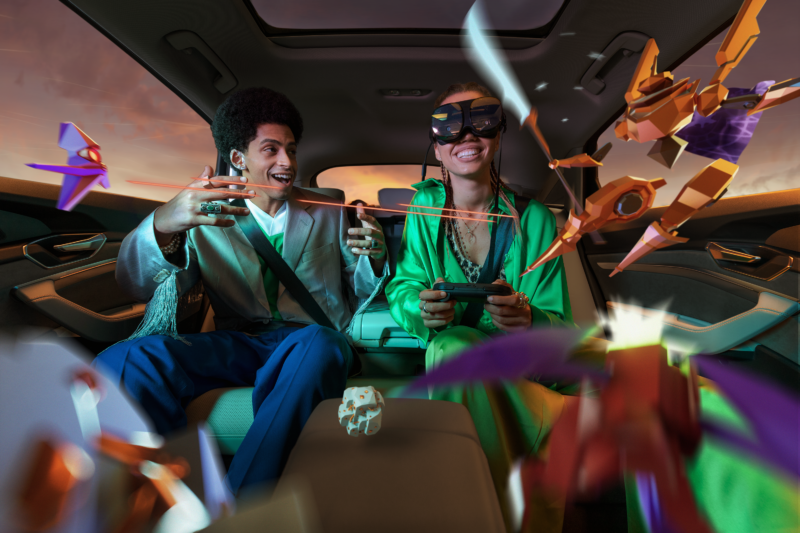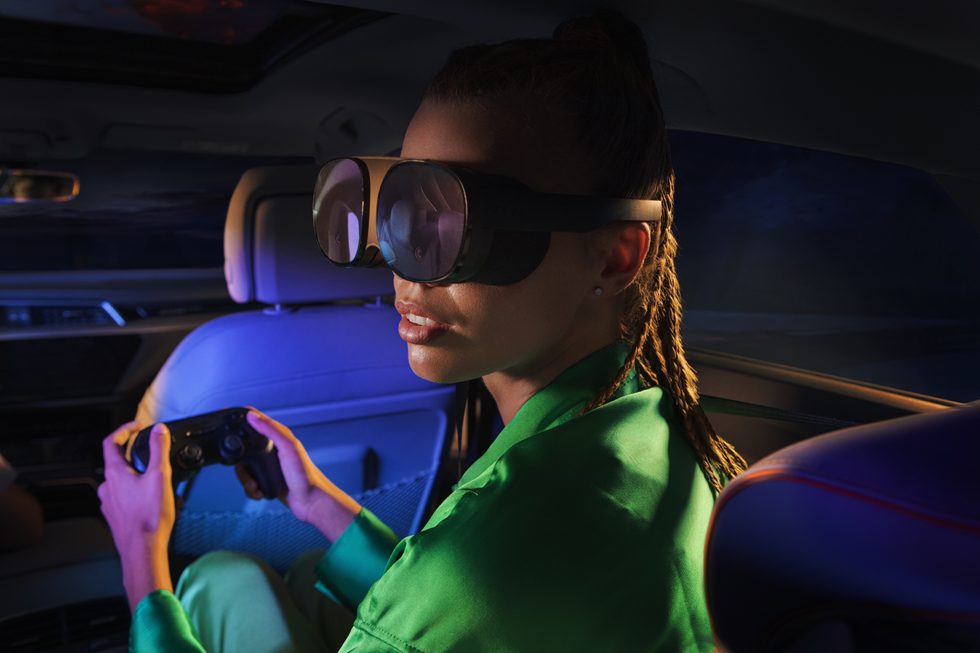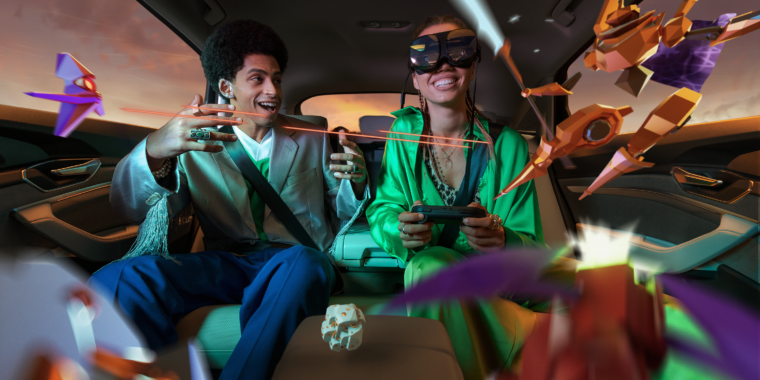
Holoride
Virtual reality is coming to the passenger seat near you, at least as long as you own an Audi vehicle with the brand’s most current operating system, anyway. The Audi spinoff, Holoride, announced this week that it will begin offering the Pioneer Pack for just under $700, which includes an HTC VIVE Flow headset, an 8BitDo Pro 2 Gamepad, and a year-long subscription to the Holoride platform, for those who own a 2023 Audi or newer (with the MIB 3 system). I got a quick taste of the strange in-car VR experience around my neighborhood in Los Angeles and, in spite of a tendency toward motion sickness, managed to play a video game and watch a little bit of Netflix before tapping out.
Like my cohort, who tried the Holoride experience during CES in 2019, I am not a VR aficionado, though I am fully on board (and regularly use) AR glasses for work; the Nreal AR glasses I use have made a world of difference when I have to bang out 10,000 words in a single day, resulting in a lot less computer fatigue and repetitive motion pain. So, when the engineers from Holoride strapped the HTC Vive Flow headset to my face, it wasn’t an unfamiliar sensation, but it was far more visually restrictive than I’m comfortable with, especially in the back seat of a moving vehicle. The team handed me a familiar game controller, and we were off, in spite of my nerves about the possibility of getting ill in mere minutes in the back seat of the BMW X5 that the team was using for demo purposes.
The visuals
When you first strap in, you adjust the eyepieces of the HTC Vive Flow headset the same way you would adjust binocular diopters. I don’t wear glasses except when I’m reading or working at the computer but did have a hard time finding a reasonably clear image in the glasses. I don’t wear my glasses when I’m wearing the Nreals, but in retrospect, I probably should have used them under the relatively lightweight Holoride headset since the images never really got super clear.
I tried out Cloudbreaker, a video game where you pilot a robot named Skyjack through floating scrap and AI sentries, gathering points and killing sentries as you go. When the car stopped, the motion in the VR space around me slowed down. When the car sped up, the sentries and the scraps came at me much more quickly. When the car turned, my point of view shifted without delay.
The movement of the vehicle was mirrored in real time in the movement of the scrap, floating pillars, and sentries in the game, which was developed by Schell Games. In whatever direction I looked, I could see the game space stretching out before me (or behind me), thanks to GPS data coming from the car. The mapping system gives about one square mile of data to the headset (when you have GPS connectivity), according to the engineers I spoke with, so that it can create these virtual worlds that match up with the physical one to prevent or mitigate motion sickness.
Since all the data is being processed by the glasses, the visuals aren’t as stunning as some other non-car-based VR experiences, but they’re still vivid enough and three-dimensional enough to read text and see details of some of the characters.
Cloudbreaker is pretty intuitive. Drag something toward you, slash it a few times with a sword or zap it with laser beams, and you get points. Don’t crash into a floating pinnacle or get too injured by sentries, and the game will continue along as you drive. I actually enjoyed it so much that after I died, I restarted and played the game a second time.
I was surprised at how easy it was to just jump right into the immersive experience, even though I was being driven around in the back seat of an SUV. My brain and body had no problem adapting to the motion, and as long as I stayed focused on the gameplay, I didn’t feel a twinge of nausea. I did notice on the bumpy, slow-going roads around my neighborhood that there was a slightly disembodied feeling I’d experience whenever we drove over a bump or pothole. The game didn’t replicate that kind of vertical motion very well, though it never made me overly uncomfortable.

Holoride
The Netflix and YouTube experience
That all changed when the engineers suggested that I swap to YouTube and Netflix. The engineer next to me paired an Android phone with the headset and showed me how to get to both platforms. Once there, I chose a random YouTube video to watch briefly, and for me the experience was almost immediately uncomfortable.
The video screen is small and centered in the middle of your vision, with a moving background in a soothing sky color rolling along behind the screen to help your body adjust to the movement of the car. After a few seconds of watching a short video, which was streamed from that paired Android phone to my headset, I started to feel dizzy with the beginnings of motion sickness. I quickly swapped over to Netflix to get an idea of what that experience was like, and the motion sickness got worse. The longer I watched, the worse it got.
One thing I did note before taking the headset off was that the lighter background that replicates the motion of the vehicle can make details of darker videos difficult to see. It’s a little like watching a television that’s placed in front of a window, which can wash out colors and blur details.
The audio on both the video game and videos came through the arms of the glasses for the purpose of demonstration, which offers the ability to hear other passengers in the car, but it doesn’t necessarily give the best audio experience. You can link the HTC Vive Flow with other Bluetooth headsets to enhance the audio.








